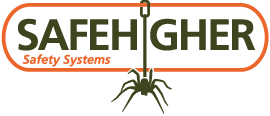Category: Horizontal Safety Line
When Seeking to Prevent Falls, What Should Priority Be Given To?
Falls from height are a leading cause of workplace injuries and fatalities across many industries. Ensuring worker safety should always be a top priority, especially for those who regularly operate in environments where the risk of falling is high. At Safe Higher Safety Systems, we understand that fall prevention goes beyond compliance; it is about […]
Read more...What are the Benefits of Using a Horizontal Safety Line?
Using a horizontal safety line, often referred to as a horizontal lifeline (HLL), offers several significant benefits in various industries and work environments where fall protection is crucial. Here are some of the key advantages of using a horizontal safety line: In conclusion, the use of a horizontal safety line provides a versatile and effective […]
Read more...